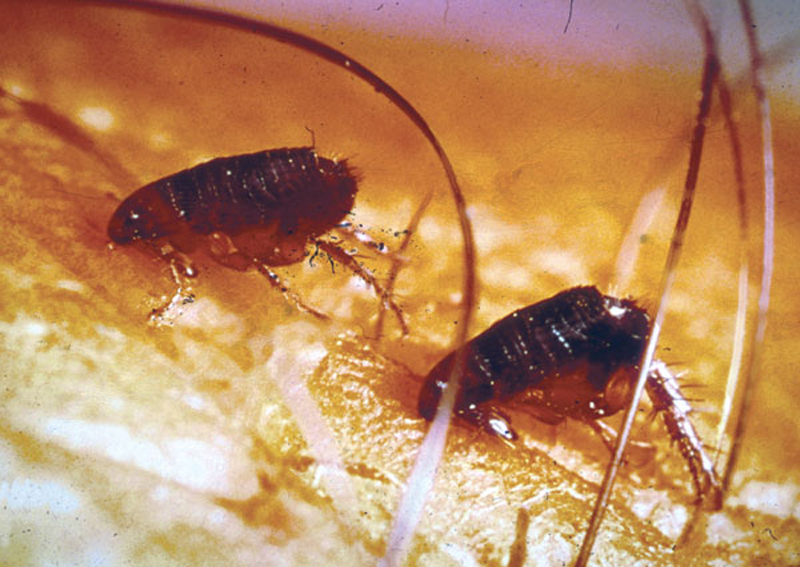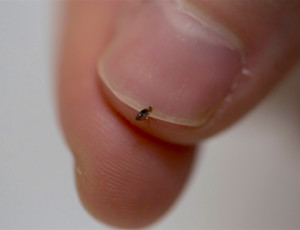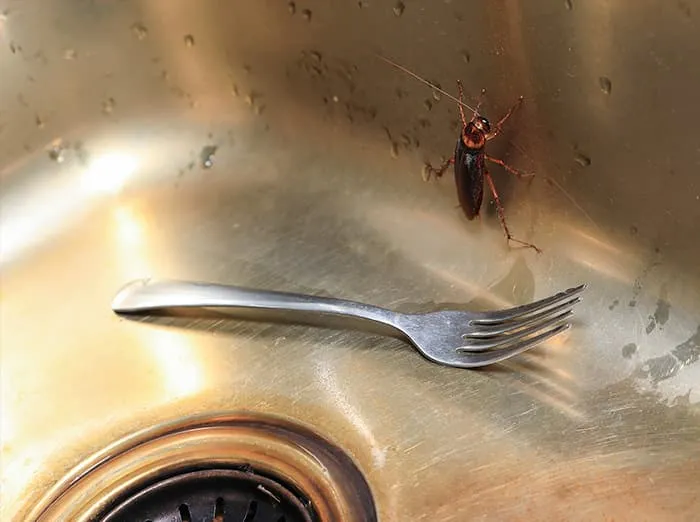Florida’s subtropical climate—featuring year-round warmth, high humidity, and mild winters—lets fleas remain active nearly nonstop. In Orlando, a major metropolitan hub drawing tourists and residents alike, these blood-feeding insects often hop onto pets, hide in lawns, or infiltrate homes if occupant or property manager vigilance falls short. This service page explains why fleas thrive in Florida’s environment, how to detect an infestation, and why employing a professional flea exterminator remains the most effective path to ensuring a bite-free, comfortable property.
Whether you maintain a single-family residence in Orlando or manage short-term rentals across the surrounding communities—Oviedo, Winter Park, Winter Springs, Altamonte Springs, Casselberry, Longwood—recognizing flea presence early and applying targeted flea treatments spares people and pets from ongoing bites, potential diseases, and repeated do-it-yourself attempts that frequently fail to kill hidden eggs or newly emerged adults.
Why Fleas Thrive in Florida
Mild Winter Temperatures
In colder regions, subfreezing weather halts or diminishes flea populations for months. Florida’s gentle cold season seldom reaches freezing, giving fleas no mandatory pause. Indoors, climate control (typically 65–85°F) sustains ideal conditions for fleas to feed, lay eggs, and hatch consistently throughout the year.
High Humidity
Fleas depend on moisture for their eggs and larvae to survive. Florida’s frequent rain, lawn irrigation, and inherent humidity keep soils moist—particularly in shady yard sections. Even light condensation from AC units can help flea larvae flourish. If occupant or staff checks overlook these zones, fleas can complete their cycle unimpeded.
Abundant Hosts
From dogs and cats to local wildlife (raccoons, opossums), fleas find warm-blooded animals to feed on. In suburban Orlando and nearby neighborhoods like Winter Park or Casselberry, frequent pet ownership combined with possible stray or wild animal traffic ensures fleas always find new hosts. Pets unwittingly bring fleas indoors, dropping eggs in carpets or upholstered furniture.
Constant Flow of People & Goods
Florida’s robust tourism, relocations, and short-term rentals see suitcases, secondhand furniture, and personal items constantly moving. Flea eggs can ride along, infesting multi-unit properties if occupant or manager vigilance is insufficient. Occupants might miss early signs until fleas spread widely, prompting occupant distress.
Multiple Generations Year-Round
A female flea lays many eggs daily. Each egg hatches into larvae that develop into pupae, waiting to emerge as adults once vibrations or CO₂ from a host signals feeding time. Without occupant or professional steps that tackle each flea life stage, fleas quickly re emerge from pupae, fueling repeated infestations.

Telltale Signs of a Flea Infestation
- Excessive Pet Scratching or Chewing
- Dogs or cats gnawing hindquarters, near tails, or bellies might be battling flea bites.
- A flea comb may reveal tiny dark fleas scurrying through fur or black specks of flea dirt.
- Dogs or cats gnawing hindquarters, near tails, or bellies might be battling flea bites.
- Unexplained Bites on Lower Legs
- Flea bites typically appear as small, itchy red bumps around ankles or calves.
- If bed bugs or mosquitoes seem unlikely, recurring bites strongly hint at fleas seeking a new host.
- Flea bites typically appear as small, itchy red bumps around ankles or calves.
- Flea Dirt
- Pepper-like black flecks on pet bedding, carpets, or fur—flea excrement containing digested blood.
- Dampening these specks on paper towels produces a reddish-brown smear, confirming fleas.
- Pepper-like black flecks on pet bedding, carpets, or fur—flea excrement containing digested blood.
- Indoor Flea Sightings
- Brown dog fleas can complete their life cycle indoors, reproducing in carpets, rugs, or furniture seams.
- Noticing fleas jumping in living areas signals a deeper infestation requiring occupant or professional measures.
- Brown dog fleas can complete their life cycle indoors, reproducing in carpets, rugs, or furniture seams.
- Pet Fatigue or Pale Gums
- Heavy flea infestations may draw enough blood to weaken smaller or younger animals.
- Checking with a vet can confirm fleas if the occupant or manager attempts to find no other parasites.
- Heavy flea infestations may draw enough blood to weaken smaller or younger animals.
- Wildlife Presence
- Raccoons, stray cats, or opossums crossing yards drop fleas in shady corners.
- Pets or occupant footsteps through these areas can pick up newly hatched fleas, carrying them indoors.
- Raccoons, stray cats, or opossums crossing yards drop fleas in shady corners.
Risks of Overlooking Fleas
Rapid Population Growth
A few fleas on a pet can lay hundreds of eggs within weeks. Florida’s mild winters accelerate each life stage if occupant or staff detection fails. Fleas quickly expand into carpets or pet bedding, re-infesting spaces despite occupant cleaning unless thorough measures handle each stage.
Pet Health Issues
Besides constant itching, fleas can trigger flea allergy dermatitis, leading to hair loss or open sores if an animal is allergic. Heavy infestations risk anemia in smaller or younger pets, necessitating veterinarian assistance if occupant detection remains delayed.
Human Discomfort
Fleas usually target pets but bite humans when hosts are scarce. Repeated bites—often on ankles—erode occupant comfort, fueling occupant anxiety about unseen pests. Without occupant synergy or professional solutions, occupant or manager frustration grows as fleas keep reemerging.
Continuous DIY Attempts
Untended fleas force occupants to vacuum incessantly, launder bedding often, or apply random sprays. Incomplete occupant steps typically fail against hidden eggs or pupae that hatch soon after. Over time, occupant annoyance and expenses pile up.
Reputational or Brand Harm
Short-term rentals, lodging, or homeowner associations in high-traffic Orlando suburbs might face occupant complaints, negative reviews, or occupant dissatisfaction if fleas remain unaddressed. Quick occupant or management action preserves occupant trust.

Why a Professional Flea Exterminator Is Essential
Lifecycle-Wide Control
A flea exterminator addresses fleas at every stage—egg, larva, pupa, adult—often combining insect growth regulators (IGRs) with adulticidal treatments. This synergy kills existing adults while blocking newly hatched fleas from maturing and breeding again—outperforming occupant attempts that frequently miss hidden eggs or pupae.
Property-Wide Assessment
Professionals scan lawn edges, mulched areas, or damp corners for flea eggs or larvae. Indoors, they check pet bedding, carpets, or furniture seams. Precisely locating breeding zones ensures insecticidal or steam usage in the correct spots, minimizing occupant or pet chemical exposure yet maximizing kill rates.
Safe, Approved Insecticides
Unregulated occupant pesticide usage can threaten occupant, child, or pet well-being if improperly applied. Exterminators use licensed products carefully around yard corners or carpet edges—prime flea habitats—while ensuring occupant or animal safety. Mechanical removal (vacuuming, steam) further reduces adult fleas or eggs physically.
Pet Collaboration
Because fleas typically ride in on animals, occupant synergy—such as using veterinarian-endorsed flea-and-tick preventatives, grooming animals frequently—blocks new fleas from reproducing. This occupant-exterminator synergy cements lasting results.
Ongoing Follow-Up
Flea pupae might hatch weeks after initial occupant relief. Many exterminators re-check occupant sightings or remain on standby if occupant concerns continue, delivering additional spot treatments or occupant housekeeping recommendations so leftover pupae can’t reignite the infestation cycle.
Typical Methods for Flea Treatments
- Inspection & Infestation Scope
- Exterminators inspect shady lawn corners, damp yard edges, or mulched areas for fleas or eggs. Indoors, carpets, furniture, or bedding get close checks.
- Determining how extensive fleas are clarifies whether yard or indoor emphasis, or both, is needed.
- Exterminators inspect shady lawn corners, damp yard edges, or mulched areas for fleas or eggs. Indoors, carpets, furniture, or bedding get close checks.
- Vacuuming & Steam
- Vacuuming carpets, rugs, or upholstered furniture quickly scoops up adult fleas, larvae, and eggs.
- High-heat steam kills fleas and eggs on contact, penetrating fabric folds without chemicals.
- Vacuuming carpets, rugs, or upholstered furniture quickly scoops up adult fleas, larvae, and eggs.
- Insect Growth Regulators (IGRs)
- IGRs hinder larvae from maturing into reproducing adults, cutting off future generations.
- Often paired with adulticides that eliminate current adults for full-lifecycle coverage.
- IGRs hinder larvae from maturing into reproducing adults, cutting off future generations.
- Outdoor Sprays or Granules
- Professionals apply tick–flea-targeted insecticides or IGR-laced granules along yard edges, fences, or shady damp areas.
- Products often activate with moisture, destroying fleas at ground level or in leaf debris.
- Professionals apply tick–flea-targeted insecticides or IGR-laced granules along yard edges, fences, or shady damp areas.
- Indoor Chemical Applications
- If fleas embed in carpets or behind baseboards, regulated sprays or dust hamper hidden nymphs or adults.
- Occupant synergy—like vacuuming daily—removes newly emerged fleas between professional visits.
- If fleas embed in carpets or behind baseboards, regulated sprays or dust hamper hidden nymphs or adults.
- Pet Flea Preventatives
- Exterminators reinforce occupant usage of vet-approved tick-and-flea solutions—collars, topicals, or oral meds—on dogs or cats.
- Grooming and combing pets regularly helps occupant detection if fleas attempt a comeback.
- Exterminators reinforce occupant usage of vet-approved tick-and-flea solutions—collars, topicals, or oral meds—on dogs or cats.
- Follow-Up & Monitoring
- Pupae can hatch 2–3 weeks after occupant sees initial relief. Re-check occupant sightings or yard edges ensures newly hatched adults also meet lethal conditions.
- Additional occupant instructions or spot treatments finalize occupant comfort.
- Pupae can hatch 2–3 weeks after occupant sees initial relief. Re-check occupant sightings or yard edges ensures newly hatched adults also meet lethal conditions.
Service Area: Orlando (Oviedo, Winter Park, Winter Springs, Altamonte Springs, Casselberry, Longwood)
Fleas thrive across Florida’s year-round mild weather, but this page focuses on solutions for Orlando—a central Florida metropolis with frequent tourist or occupant turnover. We also serve the suburbs of Oviedo, Winter Park, Winter Springs, Altamonte Springs, Casselberry, and Longwood, each vulnerable if occupant or manager vigilance declines. Florida’s gentle winters allow fleas to feed or lay eggs continuously, making occupant synergy plus specialized extermination vital to handle or avoid major infestations.

Why Choose Us
Florida-Specific Tactics
We integrate recognized flea management—like insect growth regulators, yard sprays, occupant synergy focusing on pet care—suitable to central Florida’s climate. By blending occupant housekeeping (like vacuuming or laundering on hot cycles) and professional methods, we ensure fleas at every stage (egg, larva, pupa, adult) meet lethal exposure, surpassing occupant do-it-yourself attempts often ignoring eggs or pupae.
Detailed Property Assessments
Before insecticide or IGR usage, our technicians systematically check yard edges or shady corners for fleas or eggs. Indoors, we examine carpets, pet bedding, or furniture. Accurate identification of breeding pockets shapes targeted insecticidal coverage, maximizing kills with minimal occupant chemical exposure.
Safe, Licensed Products
Insect growth regulators or adulticidal insecticides handle fleas in yard corners, baseboard edges, or carpet seams. We pair mechanical removal (vacuuming, steam) for adults or eggs in deeper fabrics, preserving occupant safety while guaranteeing lethal conditions for fleas.
Pet-Centric Collaboration
Occupant synergy—through consistent vet-prescribed flea-and-tick preventatives and frequent pet grooming—bars newly arrived fleas from re-establishing. This occupant-exterminator alliance ensures fleas find no stable environment post-treatment.
Follow-Up & Comprehensive Relief
Flea eggs can hatch weeks later, birthing new adults. Many exterminators re-check occupant reports or yard corners if occupant sightings persist, delivering additional treatments or occupant housekeeping guidelines ensuring leftover pupae don’t reignite another infestation.
Next Steps
Observing pets scratching persistently, noticing black specks (“flea dirt”) on bedding, or experiencing bites around ankles? Contact us to learn more or schedule your service. Our flea treatments for Orlando—and suburbs like Oviedo, Winter Park, Winter Springs, Altamonte Springs, Casselberry, Longwood—merge property-wide checks, specialized insecticides or IGRs, occupant-friendly instructions, plus follow-up visits—eliminating fleas at each stage, preventing repeated cycles of re-infestation.
Act swiftly to protect pets from itching or tick–flea–related diseases, keep occupant spaces comfortable from biting pests, and forego occupant frustration with partial do-it-yourself solutions that skip eggs or pupae. Rely on our Florida-based flea exterminator knowledge to pinpoint, eradicate, and disrupt the entire flea lifecycle, ensuring occupant relief no matter Florida’s mild winter that otherwise nurtures fleas year-round.
Maintaining a Flea-Free Property
After professional removal, occupant diligence keeps fleas from returning:
- Frequent Vacuuming
- Particularly carpets, rugs, or pet bedding.
- Discard vacuum contents outside in sealed plastic bags, thwarting re-entry.
- Particularly carpets, rugs, or pet bedding.
- Hot Wash Pet Items
- Launder blankets, pillows, or plush toys weekly using high-heat cycles, then thoroughly dry on high heat.
- This destroys eggs or larvae sheltering in fibers.
- Launder blankets, pillows, or plush toys weekly using high-heat cycles, then thoroughly dry on high heat.
- Pet Flea Preventatives
- Year-round collars, topicals, or oral meds recommended by a veterinarian.
- Groom pets consistently, inspecting fur (especially near ears or tail base) for stray fleas.
- Year-round collars, topicals, or oral meds recommended by a veterinarian.
- Yard Maintenance
- Mow grass, remove leaf litter, trim shrubs—fleas breed in shady, damp corners.
- Letting sun in disrupts larvae or pupae development in yard soils.
- Mow grass, remove leaf litter, trim shrubs—fleas breed in shady, damp corners.
- Limit Wildlife Access
- Seal trash bins, avoid outdoor pet food, or fence yards if raccoons or strays cross frequently.
- Fewer wildlife visits reduce fresh fleas deposited in moist yard spots.
- Seal trash bins, avoid outdoor pet food, or fence yards if raccoons or strays cross frequently.
- Check Secondhand Furniture
- Fleas or eggs may ride on used couches, rugs, or pet gear.
- Vacuum or steam suspicious pieces prior to indoor placement if the source is uncertain.
- Fleas or eggs may ride on used couches, rugs, or pet gear.
- Monitor & Re-Treat Early
- Should occupant sightings persist—bites or pets scratching—consult an exterminator quickly.
- Re-check yard edges or baseboards ensures leftover pupae or newly arrived fleas also meet lethal outcomes.
- Should occupant sightings persist—bites or pets scratching—consult an exterminator quickly.
Occupants who combine housekeeping—like vacuuming or laundering on high heat, grooming pets frequently, or clearing yard debris—and specialized flea treatments as needed successfully defeat Florida’s mild winter advantage for fleas. Thorough occupant synergy plus professional extermination ensures these blood-feeding parasites cannot re-establish, preserving occupant comfort in Orlando-area homes and businesses all year.
